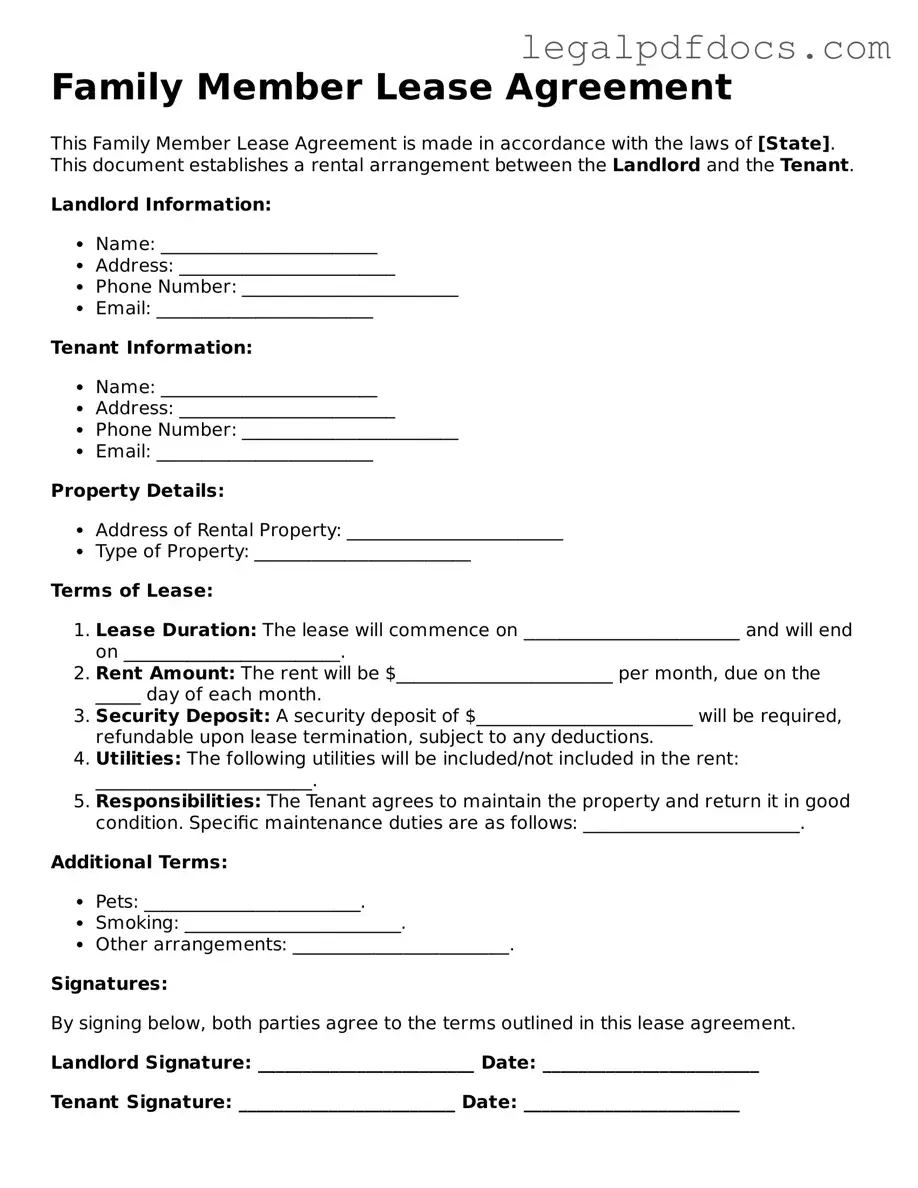Family Member Lease Agreement Template
A Family Member Lease Agreement is a legal document that outlines the terms of renting a property between family members. This agreement helps clarify expectations and responsibilities, ensuring a smooth living arrangement. If you’re ready to formalize your rental situation, fill out the form by clicking the button below.
Open Family Member Lease Agreement Editor Here
